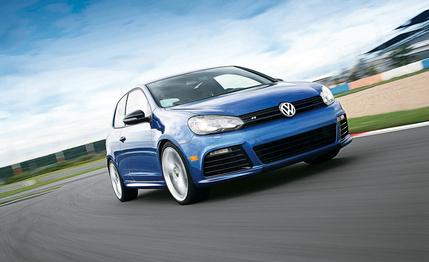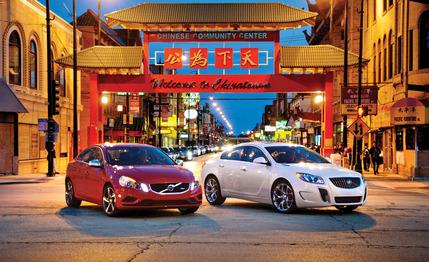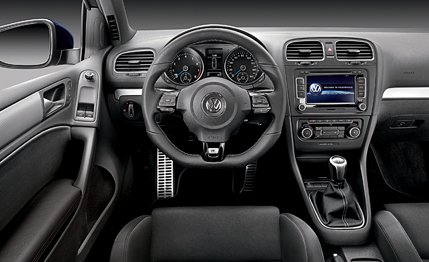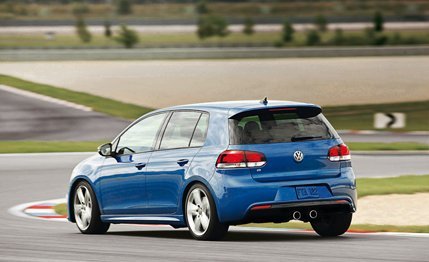 First Drive Review
First Drive Review

After spending six minutes behind the wheel of Volkswagen’s new Golf R, we can confirm that it is indeed a very special car. And it damn well better be. After all, we’ve been waiting almost three years for this thing. In one sense, the R is a more powerful four-wheel-drive version of the 10Best-winning GTI. But in another, it’s a more practical Audi TTS.

Both previous generations of the R32 were powered by VW’s narrow-angle six-cylinder and put power to all four wheels. This newest R gets a turbocharged and direct-injected inline-four as in the TTS, making 256 horsepower (six more than the last R32 and nine short of the TTS) and 243 pound-feet of torque that goes to all four shoes.
VW was listening and reacted to criticism of the DSG-only 2008 R32. Returning to the R line after a generational absence is a manual transmission, and there is no automatic option. The R is focused and built around the driving experience. Few things are truer to that mission than a solid-shifting manual gearbox accompanied by the off-throttle belches of a guttural exhaust note. New to the R, at least in the U.S., is the option of a five-door. Apparently R buyers want practicality with their performance.

Without a doubt, the R will tan the hide of a 200-hp GTI. But we can think of two other four-wheel-drive hot rods that’ll stop the hand that Volkswagen attempts to slap ’em with: the Mitsubishi Lancer Evolution GSR and the Subaru Impreza WRX STI. Both of those make more power, and the STI is slightly lighter than the 3450-pound R. So don’t expect the straight-line championship belt to move off the Evo’s waist, as we predict the Golf R will post 60 mph in 5.6 seconds (about a second slower than the last Evo GSR we tested) and run the quarter-mile in 14.2. The VW will be just a few ticks behind the lighter TTS, too—the Golf’s structure is all steel, where the TT’s front half is aluminum.
A powered rear axle nearly neutralizes the Golf platform’s tendency toward understeer. Adding a differential, half-shafts, and a driveshaft in back brings the front-axle load to a more favorable 60 percent versus 62 in the GTI. VW says the Haldex four-wheel-drive clutch pack will react to slippage and has the ability to send all available torque to either axle. We don’t doubt this, as the Golf R will, at times, act like a rear-driver and rotate the tail a bit under power.
Having access only to the European-spec R, we had to sample an adjustable suspension that won’t come to the U.S. (VW wants to keep the price down). Fortunately, the U.S. tune will be close to the European car’s sportiest mode. The ride is firm but still far from offensive—just as we would expect from a slightly tauter GTI.

When it comes to handling, the R achieves. An R-specific steering wheel isn’t too heavily weighted and points the car naturally. The shocks do an above-average job of controlling body motions. Bigger brake hardware (13.6-inch front rotors, 12.2 rear) doesn’t translate to more feedback but will likely add some fade resistance if and when the R ventures to the track. Apart from looking a lot like the GTI, the R rides 0.3 inch lower (at 57.5), is a hair-width shorter, and is adorned with “R” badges front and rear.
Final pricing is still being tossed around, but know that the R will cost more than the priciest GTI. A no-option Golf R should start at about $35,000, with a fully loaded model (navigation, keyless entry, upgraded stereo, and sunroof) peaking at $39,000. So is this a superhairy GTI or a hyperpractical TTS? It doesn’t matter. The Golf R is finally here, and that’s all that does.